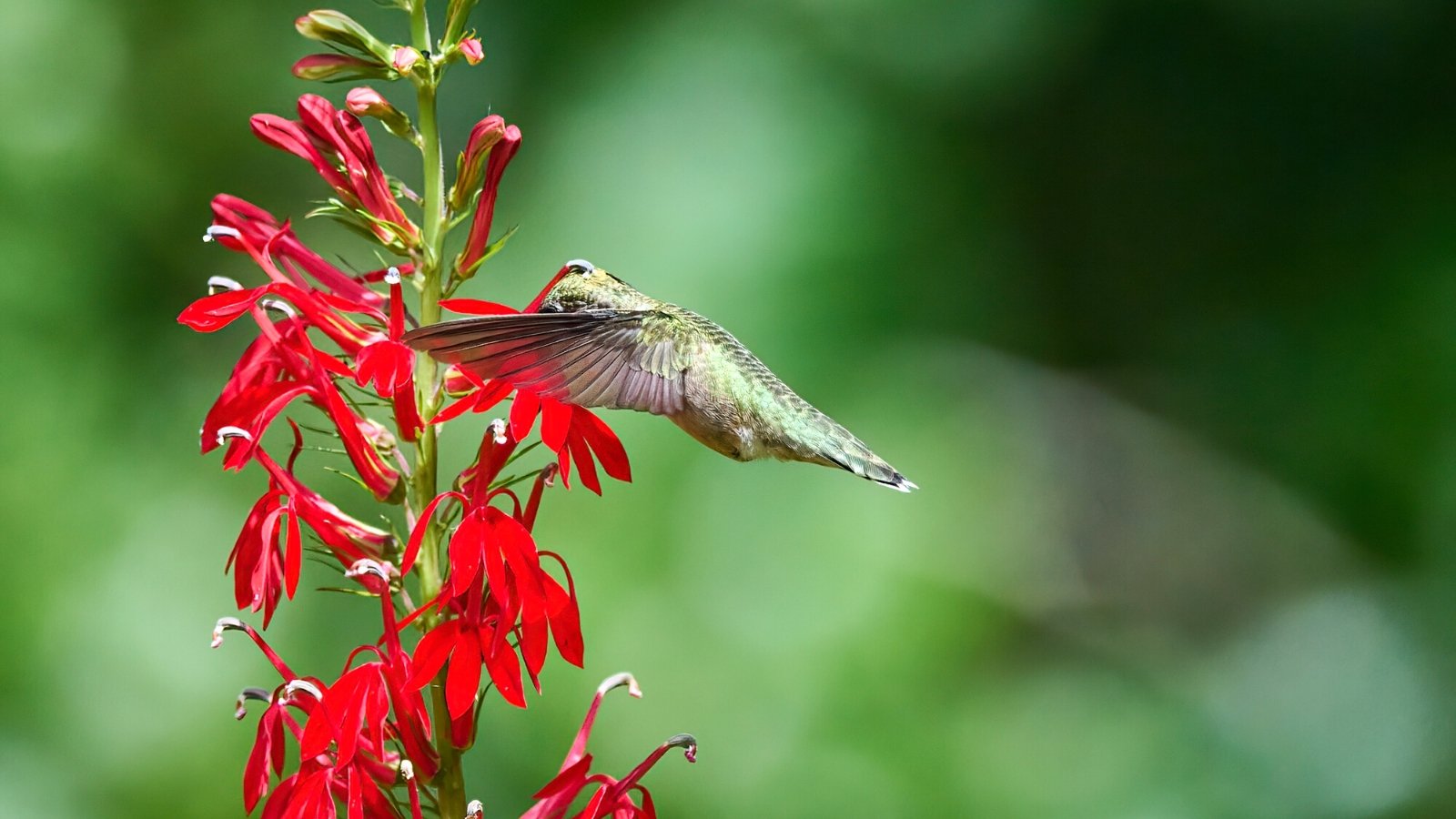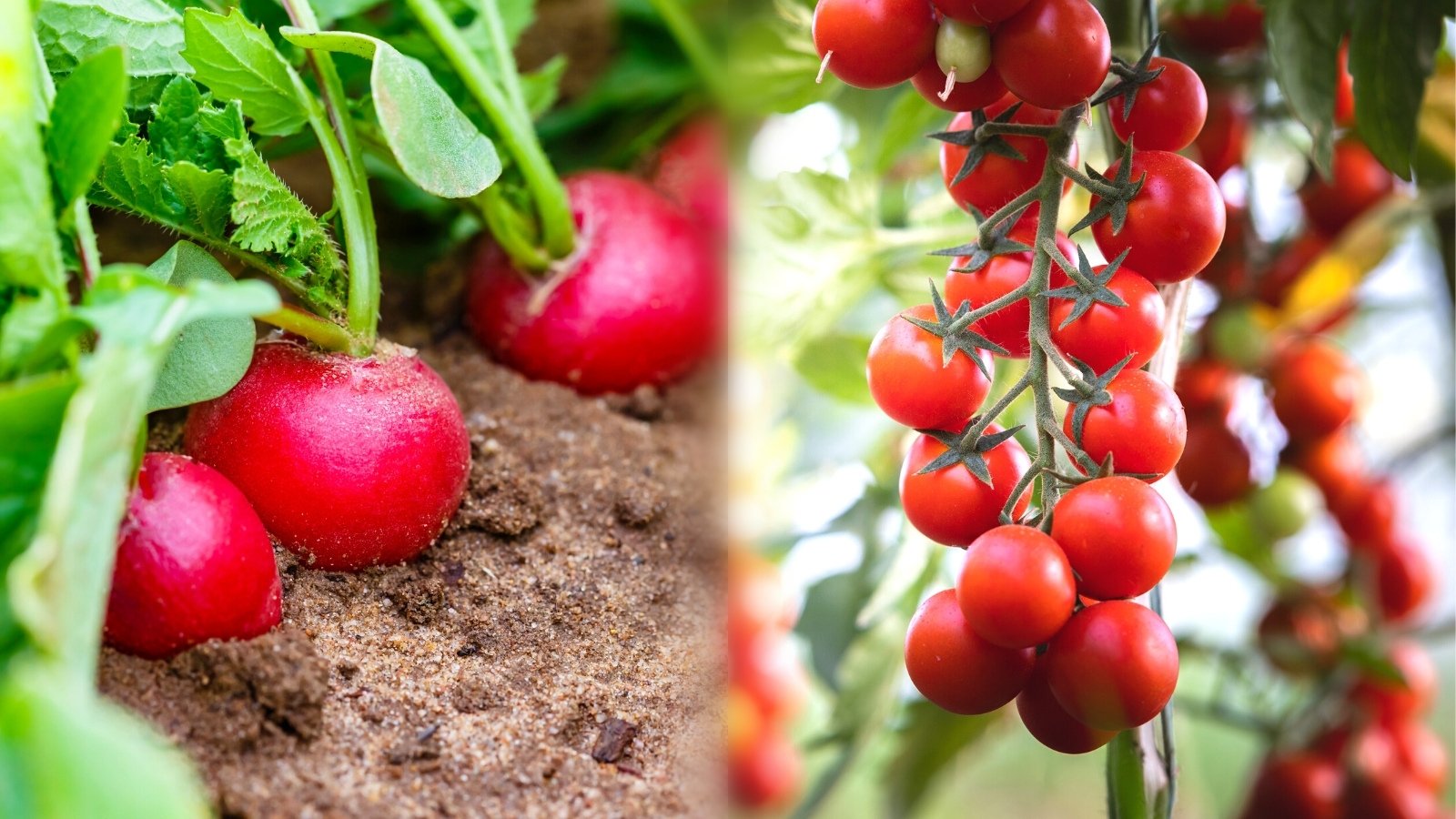If you always reach for the bottle of mustard at cookouts, you’ll love mustard microgreens. These baby greens don’t look anything like the popular condiment, but they pack the same hot and sweet taste. In fact, mustard sprouts are one of the most flavorful microgreens. They’re the perfect garden-friendly addition to zest up dinner!
Mature mustard plants may give us that familiar yellow color, but they can’t compete with the nutrition and simplicity of mustard microgreens. A serving of mustard microgreens is as good as (or even better) than your store-bought vegetables. These greens are dense with Vitamins A, B6, C, K, E, calcium, fiber, potassium, and more. After all, mustard is part of the Brassica genus, which are some of the healthiest plants out there.
Mustard microgreens look very similar to chia microgreens. They have white stems and pale green cotyledons with a bit of crunch. However, you can make your microgreen garden stand out more by using different mustard varieties. The Red Garnet variety, for example, has beautiful burgundy leaves. There are several varieties out there, so your micro garden can look as spicy as it tastes!
Good Products At Amazon For Growing Mustard Microgreens:
Mustard Microgreens Quick Info

| Flavor: | Hot, spicy, mustard taste |
| Soak: | No |
| Rinse/Drain: | No |
| Germination: | 2-3 days |
| Ideal Harvest: | 5-14 days |
Growing Mustard Microgreens
Mustard sprouts are among the easiest to produce – and growing microgreens is already an easy task! Let’s start by gathering the supplies needed for this easy-to-grow micro food.

Materials
- Seeds: select some high-quality mustard seeds. We like the ones from True Leaf Market.
- Containers: at least two shallow trays, one with drainage holes and one without (you can get a set of these and punch the holes yourself)
- Growing medium: Espoma seed starter mix is our first choice when we grow microgreens
- Light: search for a quality grow light, like this one (we also recommend these T5 grow lights)
- Sharp scissors: kitchen shears are ideal for microgreens (you can use them for other herbs too!)
- Spray bottle
As mentioned above, we love the microgreens seeds from True Leaf Market, and their mustard microgreen seeds are no exception to this rule. Here’s a selection of our favorites:
- Greenwave Mustard
- Mizuna Mustard
- Mizuna Lime Streaks Mustard
- Mizuna Red Leaf Mustard
- Mizuna Red Streaks Mustard – available in conventional or organic seed
- Osaka Purple Mustard
- Red Garnet Mustard
- Red Giant Mustard
- Red Tatsoi Mustard
- Southern Giant Curled Mustard
- Spinach (Komatsuna) Mustard
- Spicy Oriental Mustard – available in conventional or organic seed
- Tatsoi Mustard
- Tokyo Bekana Mustard
- Wasabi Mustard – available in conventional or organic seed
- White Ice Mustard (organic)
Mustard seeds are tiny so you’ll need a good amount to plant them densely. To be on the safe side, we recommend purchasing an ounce of seeds per 10×20 growing tray. You can try sowing mustard seeds from the grocery store, but seeds meant for gardening microgreens are more likely to succeed.
Microgreens need a fine-grained growing medium, which is why we recommended seed-starting soil. The delicate root system of mustard sprouts will easily navigate through it, as opposed to soil full of debris. When it comes to mustard, you can also grow microgreens in coconut coir or hydroponically.
As is the case with all micro greens, mustard sprouts will thrive under a growlight instead of natural sunlight. Since the light can be hung directly above the tray, the sprouting seedlings will grow straight up and uniformly. When using sunlight, the sprouts will lean towards the light and grow unevenly, giving your micro garden a slightly wonky look.
Soaking
Mustard seeds are tiny, round, and dark. Like chia seeds, they get gooey when put in water. It’s pretty difficult to plant a mass of goop, so definitely skip soaking these seeds.
Planting
Now that you have your supplies and unsoaked seeds, let’s get planting! Grab the growing tray with drainage holes and fill it almost to the brim with soil. Smooth out the surface and mist it well with the spray bottle. Using your palms or something flat, lightly tamp down the soil.
Next, scatter the mustard seeds all across the soil surface. Space them closely enough to grow a mat of greens but far apart enough to allow for good aeration in the trays. Because the soil is already damp, the seeds should stay in place and start germinating right away.
Grab your second tray (without holes) and set it directly on top of the seeds. It should block out all light and press down on the soil. Add a small weight on top to further press the seeds into the soil. Doing so will help the roots grow down into the potting mix. Most micro greens can hold up to 5 pounds, but mustard plants can only take 2 pounds tops.
Growing

Once planted, the mustard seeds will take 2-3 days to germinate. During that time, you must keep the cover on to keep the seedlings in the dark. You should also check the soil moisture daily, misting as needed.
After sprouting, the micro greens plants will push up the cover as they grow. The cotyledons will also be visible. This is your signal to remove the blackout cover and add the grow light about 12 inches above the trays. The leaves of the mustard greens may be yellow from lack of sunlight, but they’ll quickly turn their full color.
As your micro greens grow, ensure that the soil is consistently moist. When it starts to dry out, reuse the cover tray as a watering tray. Just fill it with an inch or two of water and set the growing tray inside. Let the soil take its fill for about 10 minutes and then remove the watering tray. This bottom-watering method is the best way to keep your micro greens plants hydrated without adding excess moisture on the soil surface, which can invite bacterial growth.
Harvesting
Mustard greens are usually ready for harvesting between 5 and 14 days from planting. This makes them ideal for harvesting as needed, unlike other microgreens that have a short harvest window.
When ready to be eaten, the cotyledon leaves will be fully opened and the microgreen will have 1-3 inches of growth. However, they should be harvested before the first true leaves show up, as the taste and texture of the microgreen will change drastically.
Since we’re removing all the leaves, mustard microgreens are a one-and-done plant. You can pull out the spent seed and reuse the soil, but keep in mind that it will lose nutrients and gain bacteria over time. Perhaps the best option is to compost the soil into some organic growing medium for another project (like basil micro greens!).
Storing
Before you eat your harvested micro greens, give them a good wash (some organic gardeners skip this step). Then, add them to any food that needs some spice. Fresh mustard microgreens are fantastic as herbs with salad, sandwiches, hotdogs, and a number of Indian dishes.
Unused micro greens should be sealed in a plastic bag and kept in the fridge (add in a paper towel to absorb moisture if needed). They should stay good for around 10 days. Like most fresh food, they should be eaten as soon as possible for the best taste and health benefits.
Frequently Asked Questions

Q: Are mustard microgreens good for you?
A: Absolutely! These herbs are close relatives to kale and their nutritional value shows it! They have a number of vitamins and minerals as well as benefits for hair growth. Also, research has shown that the mustard microgreen greatly benefits those with diabetes.
Q: What do mustard microgreens taste like?
A: Well, like mustard! You can grow microgreens in lieu of stocking your fridge with processed condiments. Depending on the variety, these green gardening sprouts may even taste like horse-radish.














